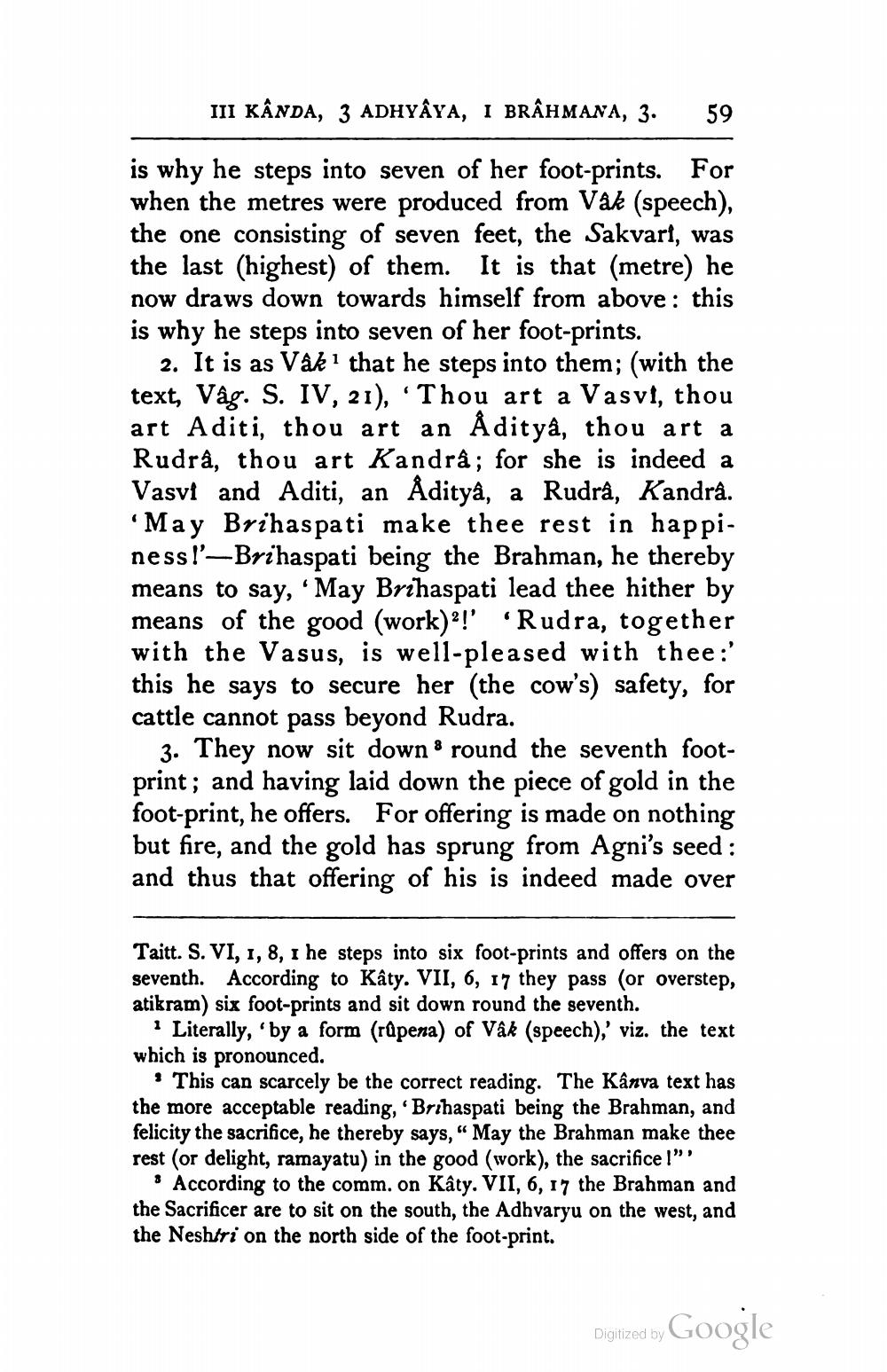________________
III KANDA, 3 ADHYAYA, I BRAHMANA, 3. 59
is why he steps into seven of her foot-prints. For when the metres were produced from Vâk (speech), the one consisting of seven feet, the Sakvart, was the last (highest) of them. It is that (metre) he now draws down towards himself from above: this is why he steps into seven of her foot-prints.
2. It is as Vâk1 that he steps into them; (with the text, Vâg. S. IV, 21), 'Thou art a Vasvi, thou art Aditi, thou art an Adityâ, thou art a Rudrâ, thou art Kandrâ; for she is indeed a Vasvi and Aditi, an Adityâ, a Rudrâ, Kandrâ. 'May Brihaspati make thee rest in happiness!'-Brihaspati being the Brahman, he thereby means to say, 'May Brihaspati lead thee hither by means of the good (work)!' 'Rudra, together with the Vasus, is well-pleased with thee:' this he says to secure her (the cow's) safety, for cattle cannot pass beyond Rudra.
3. They now sit down round the seventh footprint; and having laid down the piece of gold in the foot-print, he offers. For offering is made on nothing but fire, and the gold has sprung from Agni's seed: and thus that offering of his is indeed made over
Taitt. S. VI, 1, 8, 1 he steps into six foot-prints and offers on the seventh. According to Kâty. VII, 6, 17 they pass (or overstep, atikram) six foot-prints and sit down round the seventh.
1 Literally, 'by a form (rûpena) of Vâk (speech),' viz. the text which is pronounced.
This can scarcely be the correct reading. The Kânva text has the more acceptable reading, 'Brihaspati being the Brahman, and felicity the sacrifice, he thereby says, "May the Brahman make thee rest (or delight, ramayatu) in the good (work), the sacrifice!"'
According to the comm. on Kâty. VII, 6, 17 the Brahman and the Sacrificer are to sit on the south, the Adhvaryu on the west, and the Neshtri on the north side of the foot-print.
Digitized by
Google




